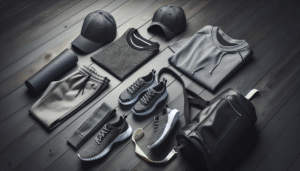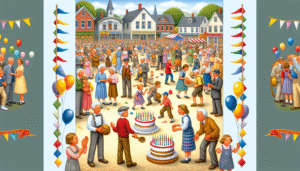
Mastering the Art of Layering: A Guide to Stylish Warmth
Keywords: Layering clothes, fashion layering, outfit layering, winter layering, layering techniques, layering outfits, how to layer clothes, layering tips, seasonal layering
Layering is more than just piling on clothes; it’s a sophisticated art form that allows for adaptable style and optimal comfort. It’s about creating a cohesive and visually appealing outfit while regulating body temperature effectively. Whether battling frigid winter winds or transitioning through unpredictable spring weather, mastering layering techniques is essential for any fashion-conscious individual.
The Foundation: Base Layers
The cornerstone of any layered look is the base layer. This crucial first step is designed to wick away moisture, keeping you dry and warm even when active. Opt for breathable, close-fitting fabrics like merino wool, thermal underwear, or synthetic blends designed for moisture management. Avoid cotton, as it absorbs sweat and can leave you feeling chilled. Choose a base layer that aligns with the anticipated temperature and activity level. A lightweight thermal is perfect for mild days, while heavier options are better suited for colder climates or strenuous activities.
Building Warmth: Mid-Layers
Mid-layers provide insulation and trap warm air close to the body. These layers can vary in thickness and material depending on the weather conditions. Lightweight fleece jackets, sweaters, hoodies, and vests are excellent mid-layer choices. Consider the overall aesthetic when selecting mid-layers, ensuring they complement the base layer and the intended outer layer. Experiment with different textures and fabrics to add depth and visual interest to your outfit. For instance, a chunky knit sweater can add a cozy touch over a smooth thermal top.
Outer Shell: Protection from the Elements
The outer layer acts as a shield against wind, rain, snow, and other elements. Choose a jacket or coat that provides adequate protection based on the weather forecast. Waterproof and windproof shells are essential for wet and windy conditions, while down or insulated jackets offer superior warmth in freezing temperatures. Consider the length and fit of the outer layer; longer coats provide more coverage, while shorter jackets offer greater mobility. A well-chosen outer layer not only protects you from the elements but also completes the overall aesthetic of your layered look.
Playing with Length and Proportion
Creating a visually appealing layered outfit involves paying attention to length and proportion. A common technique is to layer shorter items over longer ones, such as a cropped jacket over a long tunic or a short sweater over a longer shirt. This creates a sense of balance and prevents the outfit from appearing bulky. Experiment with different lengths and silhouettes to find what works best for your body type and personal style. Don’t be afraid to mix and match different textures and fabrics to add depth and dimension.
Accessorizing the Layered Look
Accessories are the finishing touch to any layered outfit. Scarves, hats, gloves, and belts not only add warmth but also enhance the overall look. A brightly colored scarf can add a pop of color to a neutral outfit, while a stylish hat can complete a winter ensemble. Consider the functionality of your accessories as well. Choose gloves that provide adequate warmth and dexterity, and opt for a belt that cinches the waist and creates a more defined silhouette.
Layering for Different Seasons
The art of layering extends beyond winter. In spring and fall, layering becomes essential for navigating fluctuating temperatures. Lighter layers, such as cardigans, denim jackets, and lightweight scarves, can be easily added or removed as needed. Focus on breathable fabrics like linen and cotton for warmer days, and incorporate light jackets or windbreakers for cooler evenings.
Layering for Different Occasions
Layering can be adapted to suit different occasions. For a casual everyday look, layer a simple t-shirt with a cardigan and a denim jacket. For a more formal occasion, layer a button-down shirt with a sweater and a blazer. The key is to choose pieces that are appropriate for the event and that work well together in terms of color, texture, and style.
The Importance of Fit
Proper fit is crucial for successful layering. Each layer should fit comfortably without being too tight or too loose. Avoid overly bulky layers, as they can restrict movement and make the outfit appear unflattering. Opt for well-fitting pieces that allow for easy movement and layering. Remember that layering adds bulk, so choose slightly slimmer-fitting items to avoid a bulky silhouette.
Color Coordination and Contrast
Color plays a vital role in creating a visually appealing layered outfit. Experiment with different color combinations, using contrasting shades to create a dynamic look or sticking to a monochromatic palette for a sleek and sophisticated aesthetic. Consider the color wheel and explore complementary or analogous color schemes for a harmonious and balanced outfit. Don’t be afraid to incorporate patterns and prints, but ensure they complement each other and don’t clash.
Fabric Considerations
Choosing the right fabrics is essential for comfortable and effective layering. Opt for breathable and moisture-wicking fabrics for base layers, and choose insulating materials for mid-layers. Consider the weight and texture of each fabric, ensuring they work well together and don’t create unnecessary bulk. Mixing different textures, such as a smooth silk blouse with a chunky knit cardigan, can add visual interest to your outfit.















